VIPER, NASA’s Moon resource mapper
NASA’s boldest robotic Moon mission yet will launch in 2024 to study water ice in one of the harshest planetary environments in the solar system.
NASA wants to land humans on the Moon again—this time to stay. The agency’s Artemis program envisions people sustainably living on the Moon using locally available resources like water. We know from past missions that the lunar poles host at least 600 billion kilograms of water ice, and likely much more. But to be able to use that water, we need to learn about its state and how accessible it is up-close. That’s where NASA’s first robotic lunar rover comes in.
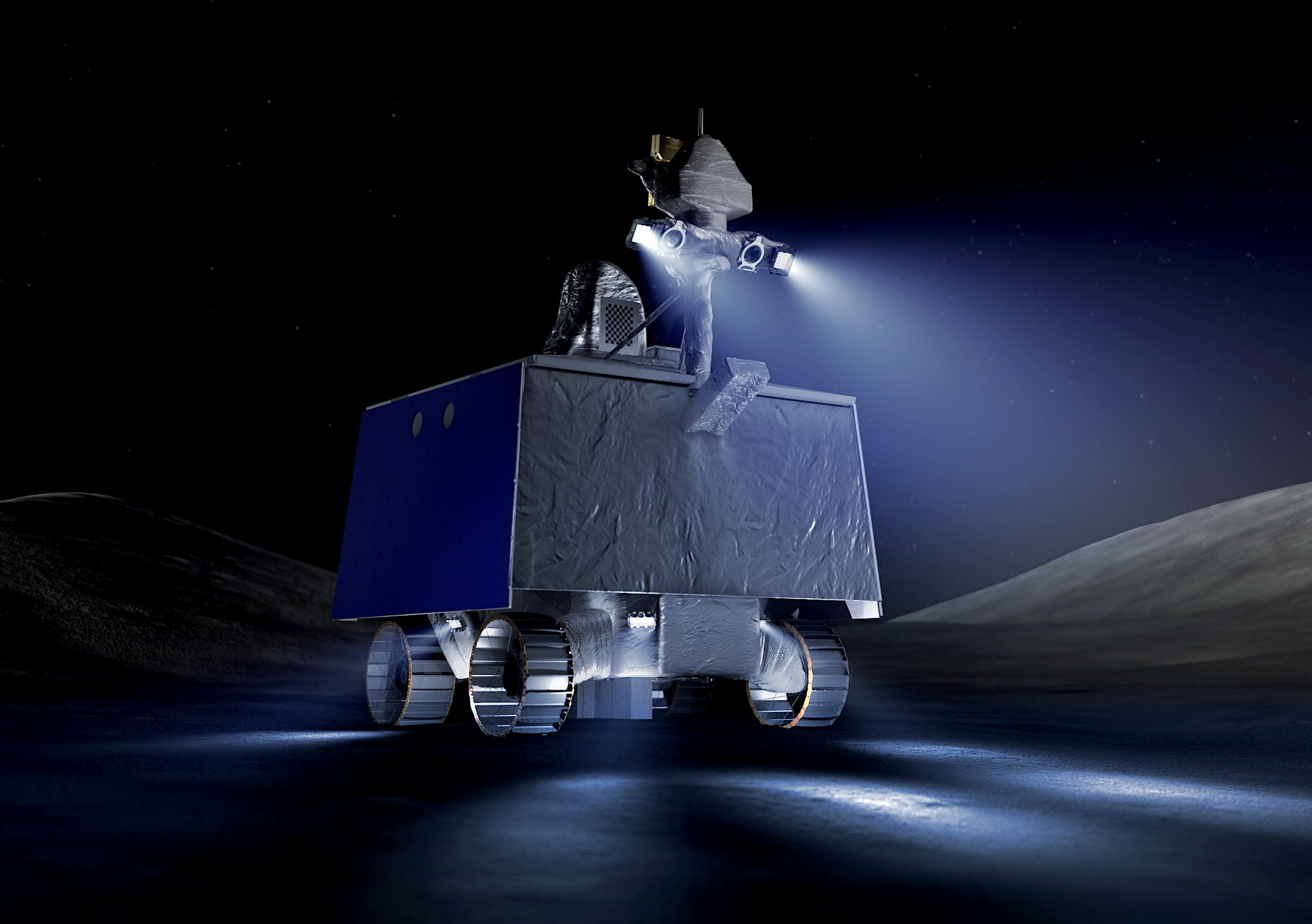
The Volatiles Investigating Polar Exploration Rover, or VIPER, will land on the Moon’s south pole in late 2024. The golf-cart-sized rover will explore the south pole for at least 100 days, venturing into frigid permanently shadowed regions—areas forever deprived of sunlight—to study and map water ice deposits.
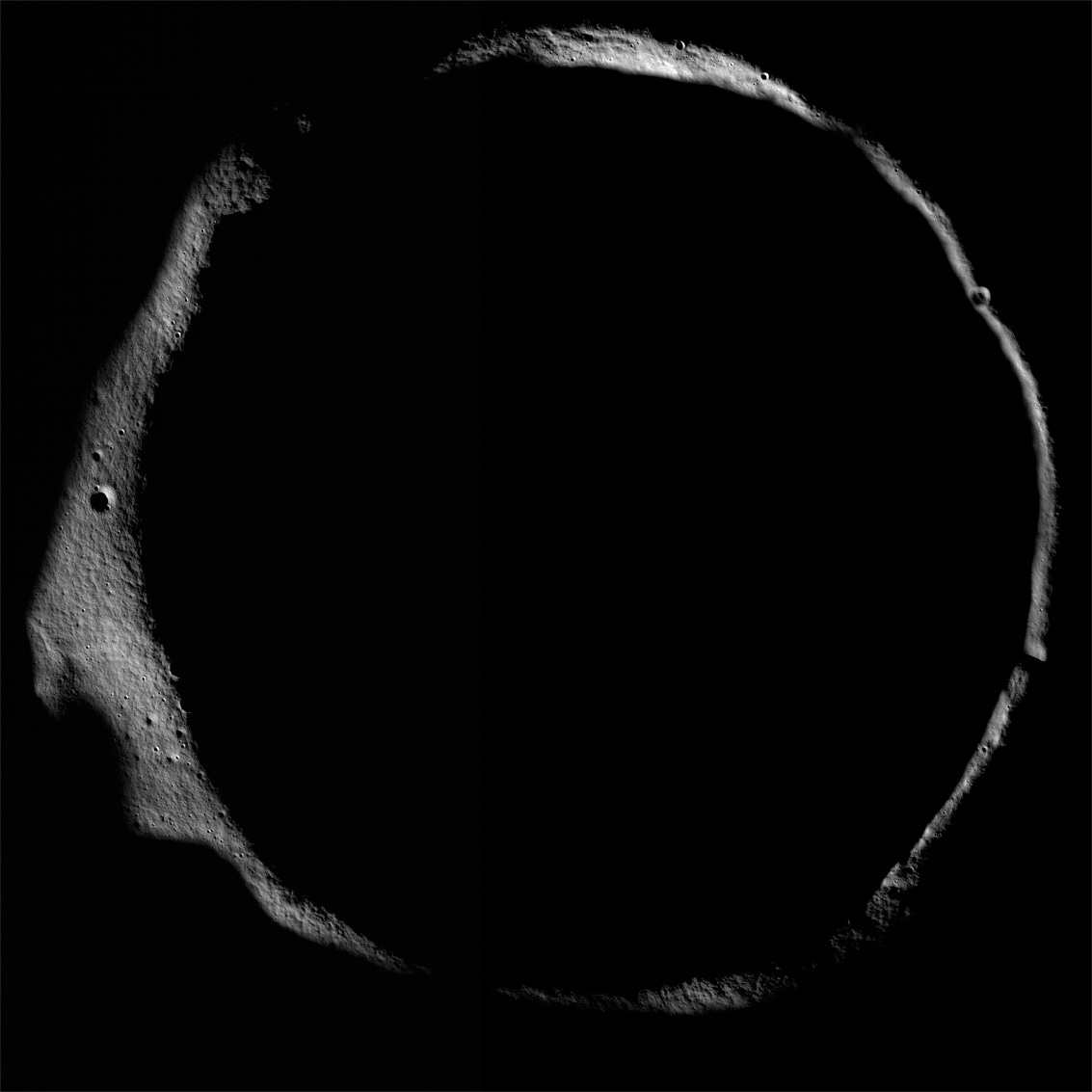
VIPER will tell us about the nature of water in permanently shadowed regions for the first time, including where it’s most likely to be found, how easy it is to access, and how much of it is in the form of ice crystals versus being bound to minerals. This will not only inform us how we can extract the water to sustainably live on the Moon but also provide insights into the history and origin of water in the inner solar system, including Earth.
Information about the exact nature of water on the Moon’s poles is so crucial from both a scientific and exploratory standpoint that many other nations are planning missions like VIPER, the earliest one being the joint Japanese-Indian LUPEX rover targeting a post-2024 launch.
How will VIPER map water on the Moon?
NASA has equipped VIPER with three spectrometers—instruments that can identify a material’s composition based on how they emit or absorb light—to collectively detect water ice on the surface and subsurface of permanently shadowed regions.
When exploring a region, VIPER will first use its neutron spectrometer to detect hydrogen—an indirect sign of water—up to 1 meter below the surface. VIPER will scout both inside and outside permanently shadowed regions for locations that show hints of substantial water ice. Once VIPER identifies a potentially water-rich area, typically in a permanently shadowed region, it will use its drill to dig up soil from up to a meter below the surface—the deepest for any robotic mission on another world.
Next, an infrared spectrometer will analyze the soil to determine if the detected hydrogen was part of water ice or hydroxyl (OH) bound to minerals. It will also identify other volatile resources like carbon dioxide, ammonia, and methane. Since volatiles evaporate even at moderately warm temperatures, some of them would escape the soil before the infrared spectrometer can detect them. This is where VIPER’s final instrument, a mass spectrometer, comes in. It will identify escaped volatiles from the soil that pass through it, as well as gases in the environment.
By repeating this entire process at various locations, VIPER will give us a holistic grasp on the exact nature, amount and accessibility of water in various conditions on the Moon’s poles.
Preparing VIPER for the abyss
On top of dealing with the numerous challenges in any Moon mission, NASA is designing VIPER to power through one of the harshest planetary environments in the solar system. With temperatures during major investigations well below -180 degrees Celsius, a rocky terrain riddled with steep slopes, a near-horizon Sun causing long, moving shadows that the rover needs to keep avoiding or face a freeze, we’re sending VIPER to lunar hell.
Despite facing much colder temperatures than NASA’s flagship Mars missions, VIPER doesn’t have a nuclear radioisotope for warmth. Instead, the solar-powered rover will rely on its battery and heat pipes to keep itself from freezing. VIPER can survive complete darkness for a little over 4 Earth days whereas a typical lunar night lasts 14 Earth days. VIPER will thus park at pre-identified high-altitude spots at various points during the mission where nights last only 3 to 4 Earth days.
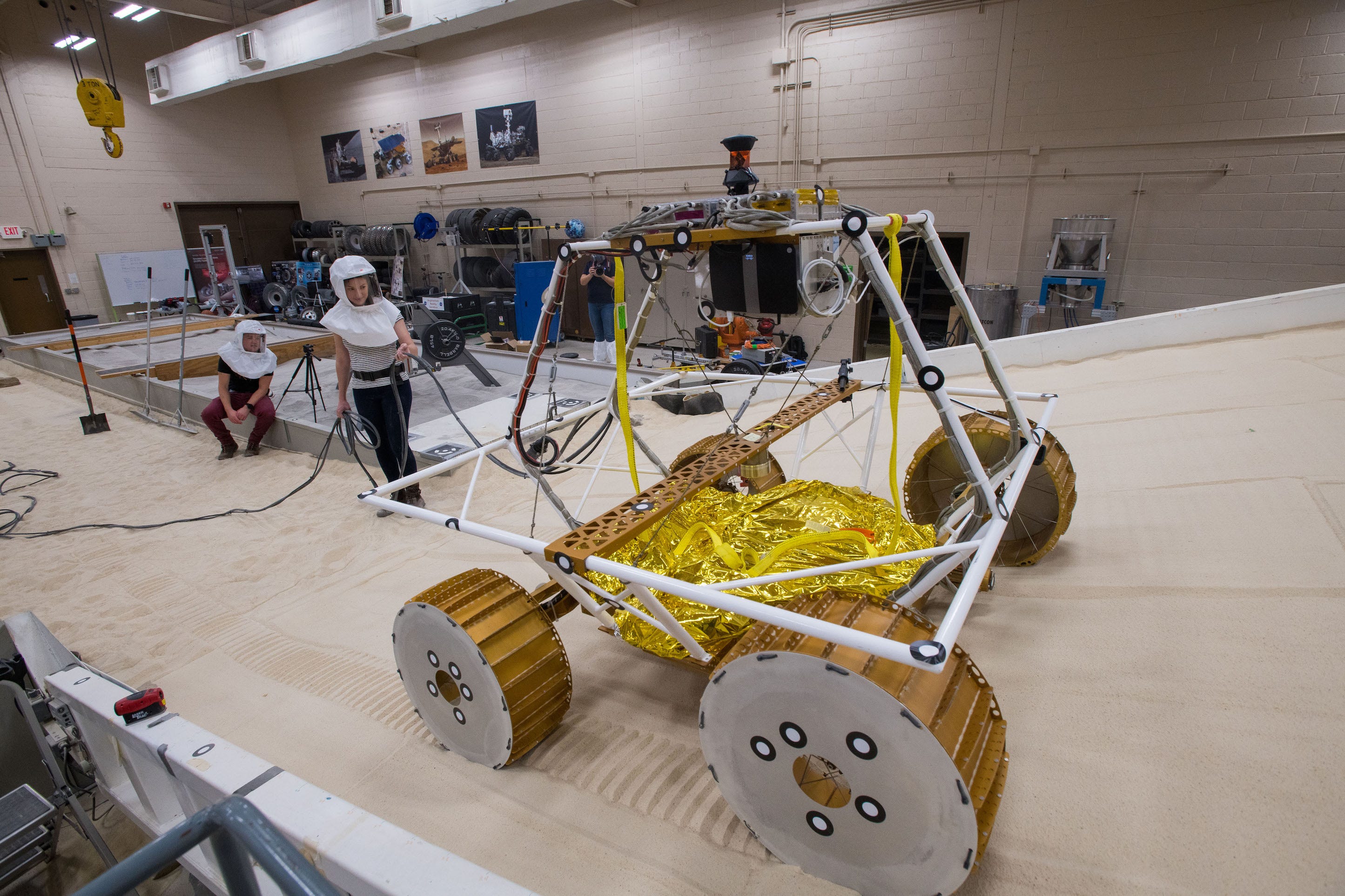
To rove rocky polar terrain, go in and out of craters, and on soils likely different than elsewhere on the Moon, VIPER boasts unprecedented agility in a planetary rover. It can traverse 15-degree inclines with ease, and even 25 to 30 degree slopes if need be. VIPER can drive sideways, diagonally, or move in any direction without changing where it’s facing to keep its solar panels pointed at the Sun. If VIPER gets stuck in fluffy soil, it can lift each of its wheels independently to dig into and sweep along the surface—a bit like swimming—to get out of it. To prevent lunar dust from damaging its wheel system or internals, NASA is wrapping VIPER in multiple protective layers.
VIPER needs to stay connected to Earth during all of its scientific operations—a difficult task because it needs to enter craters to study water ice. To solve this, NASA used extensive mapping data from its Lunar Reconnaissance Orbiter to have VIPER land near the western edge of the Nobile crater. This region has gentle enough slopes for the rover to maintain line of sight to Earth while also meeting all other mission requirements. The rover will primarily look for and study surface and subsurface water ice deposits in and around 500-to-800-meter-sized permanently shadowed regions near the large Nobile crater.
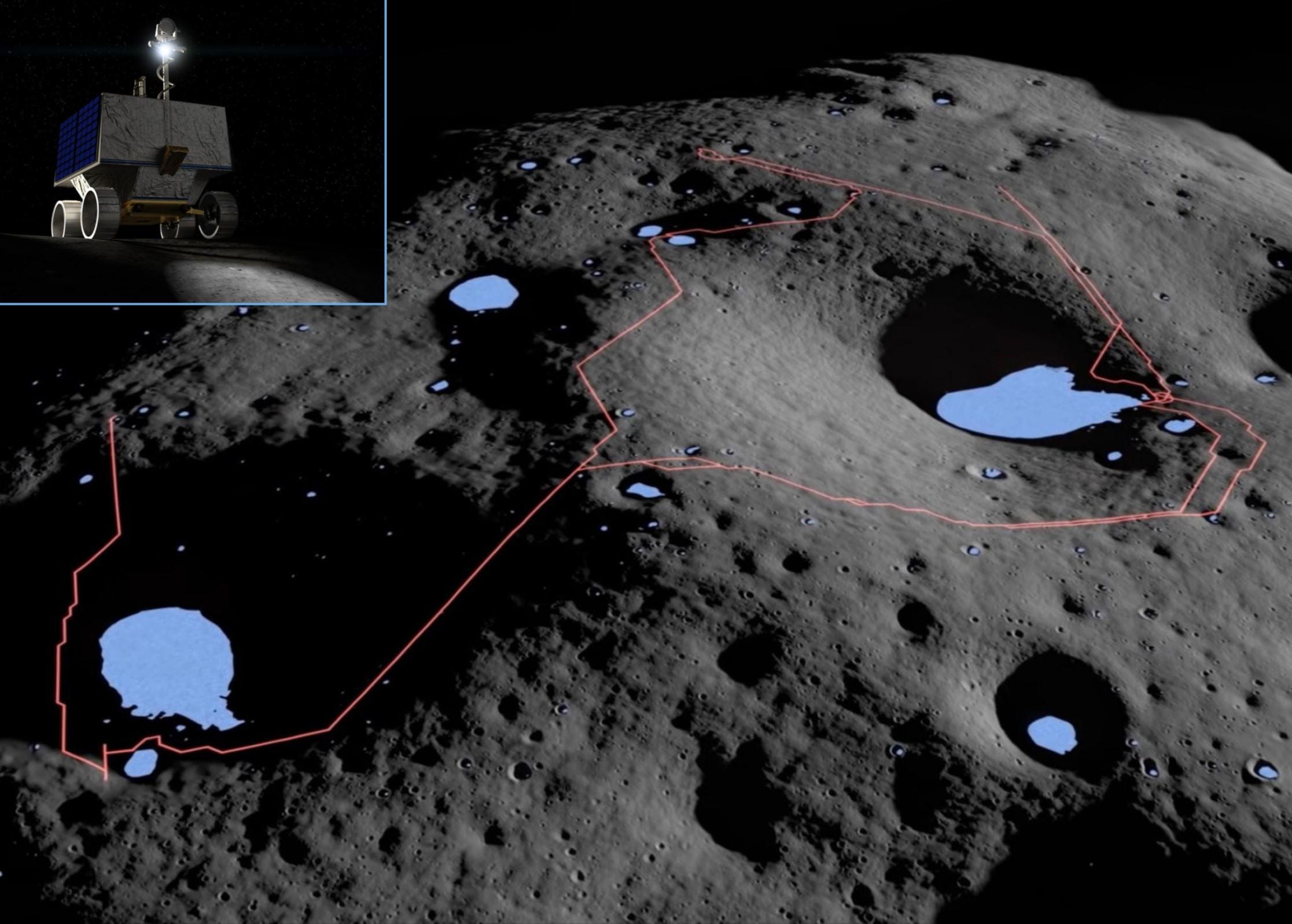
NASA trusts commercial landing for crucial mission
VIPER is different from NASA’s traditional planetary missions. The lander that will deliver VIPER to the Moon’s south pole is not built by NASA, but by a commercial company, Astrobotic, selected via a competitive bidding process part of the agency’s CLPS program. Astrobotic has selected SpaceX Falcon Heavy to launch its lander, counting on them to not miss the brief, mission-critical launch window in late 2024. The fact that NASA is entrusting a commercial partner with such a crucial mission shows the agency’s growing confidence in building a commercial space ecosystem around lunar exploration.
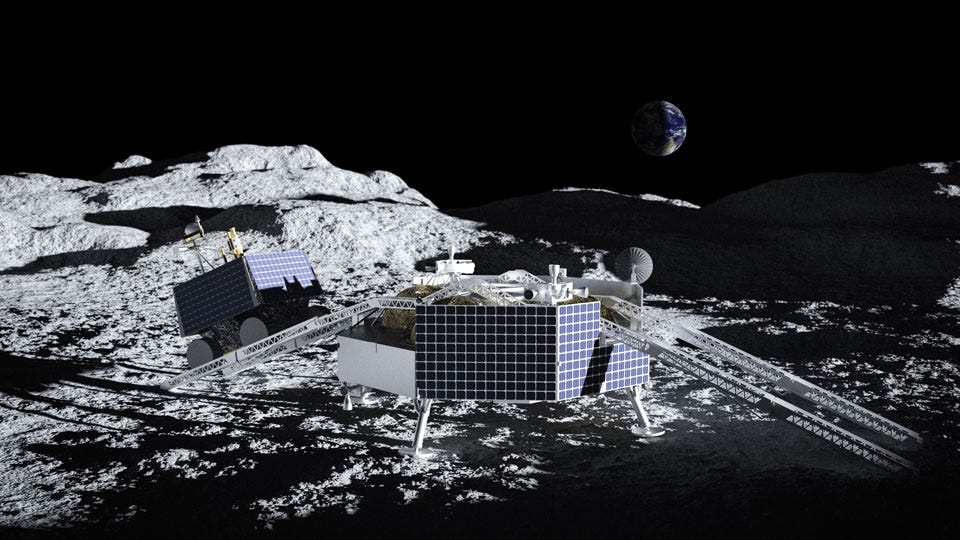
To reduce mission risks and to maximize the value of future crewed missions depending on VIPER’s findings, NASA is flying versions of VIPER’s instruments on three CLPS commercial landing missions before the rover’s flight to ensure they work as expected.
VIPER’s unprecedented engineering to explore extreme environments will pave the way for future habitats on the Moon. And yet the mission costs just $660 million, minus operating expenses. That’s about three to four times less than what NASA spends on its flagship Mars missions or one SLS rocket launch. VIPER is a sweet planetary deal.
Originally published at The Planetary Society.
→ Browse the Blog | About | Donate ♡
